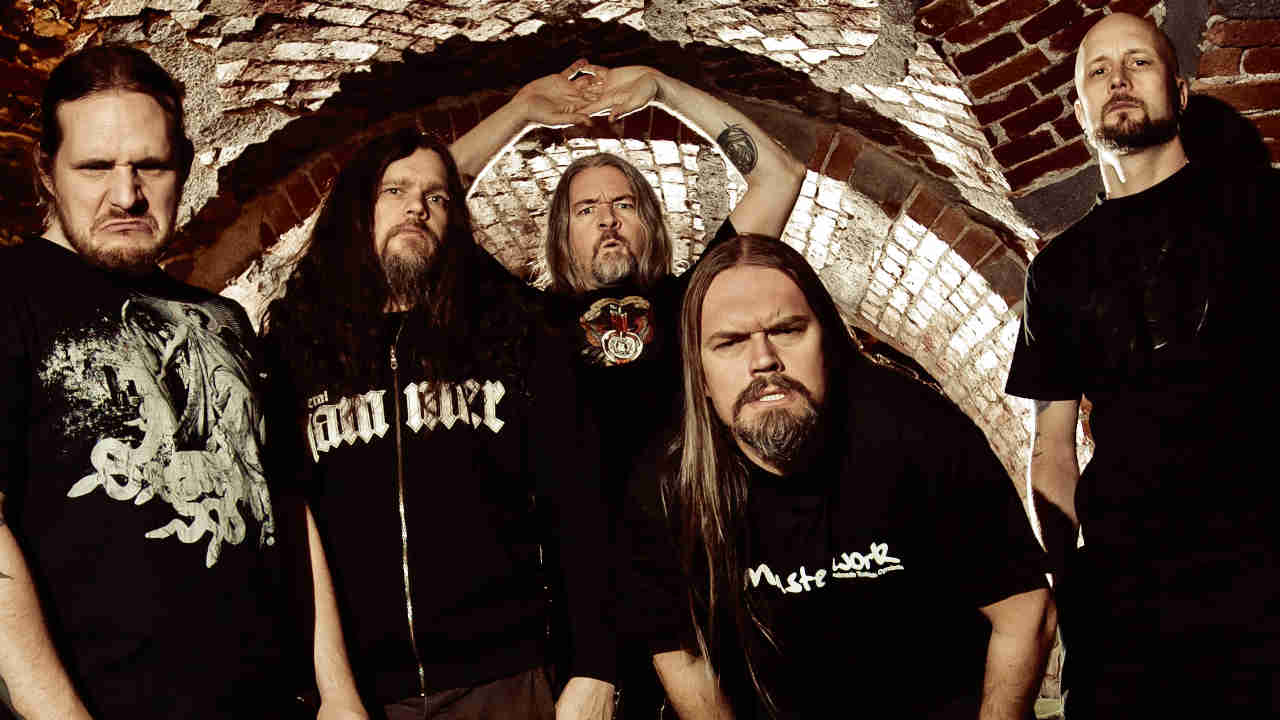Swedish trailblazers Meshuggah are one of the most innovative and influential bands of the last 30 years. In 2012, as they geared up to release their new album, Koloss, guitarist Mårten Hagström and drummer Tomas Haake looked back on their rise from thrash metal wannabes to tech metal giants.

Meshuggah guitarist Mårten Hagström is puzzled by the whole concept of ‘djent’. The Swedish band are universally acknowledged as pioneering this innovative and exciting strain of modern metal. The term describes a mix of syncopated, elastic guitar riffs, bringing together complexity and palm-muted, distorted chords. But for Mårten, it’s something of a mystery.
“I know we’re credited with starting this whole thing, but I really wonder what people mean by the term,” he says. “However, in the wider scheme of things it’s very warming and gratifying to know that there are a lot of bands out here – ones we respect – who claim us to be an influence. It’s a long way removed from where we were in the early days, when we thought nobody actually cared about what we did!”
Meshuggah’s story has been beset by as many out-of-the-blue interruptions and sudden, headspinning reconfigurations as their music itself. While not a rags-to-riches tale, it is about turning musical rage into sonic gold dust – the alchemy of sound.
“Tomas Haake [current Meshuggah drummer] and I remember them when they were Metallien back in 1985,” recalls Mårten of Meshuggah’s formation. “We were in the band Barophobia and supported Metallien in their very early days. So we saw them develop.”
Metallien were started by guitarist Fredrik Thordendal in the small Swedish town of Umeå. But after making a few demos, the band split up, realising that they were making little progress.
Meanwhile, in 1987, guitarist/vocalist Jens Kidman started a new band called Meshuggah, taking the name from an ancient Yiddish language term, as Mårten explains: “When the band was in its infancy, Jens was sitting looking through books for some name ideas for the band. He came across the word Meshuggah, which means ‘insane’. The band liked it so much they decided to keep it as a name.”
However, this didn’t last long, and when the project fell apart, Jens teamed up with Fredrik in a new band called Calipash, the lineup also featuring bassist Peter Nordin and drummer Niklas Lundgren. It was at Fredrik’s suggestion that the Meshuggah name was revived, and this time there was some momentum.
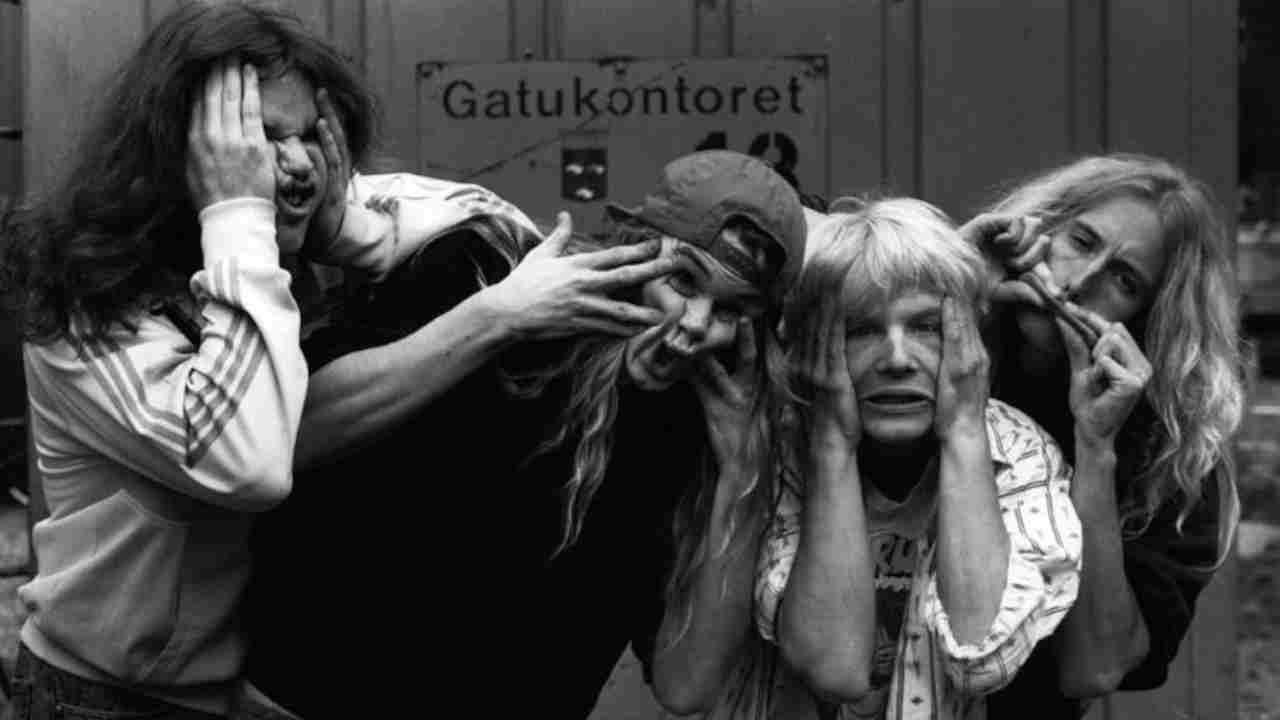
In 1989, the newly-christened band released the raw three-track EP titled Psykisk Testbild, with 1,000 copies pressed up on vinyl and sold at a local record shop, Garageland.
“The band used this to try and get a proper record deal,” says Tomas. “They sent out copies to every company they could think of, and Nuclear Blast offered them a contract.”
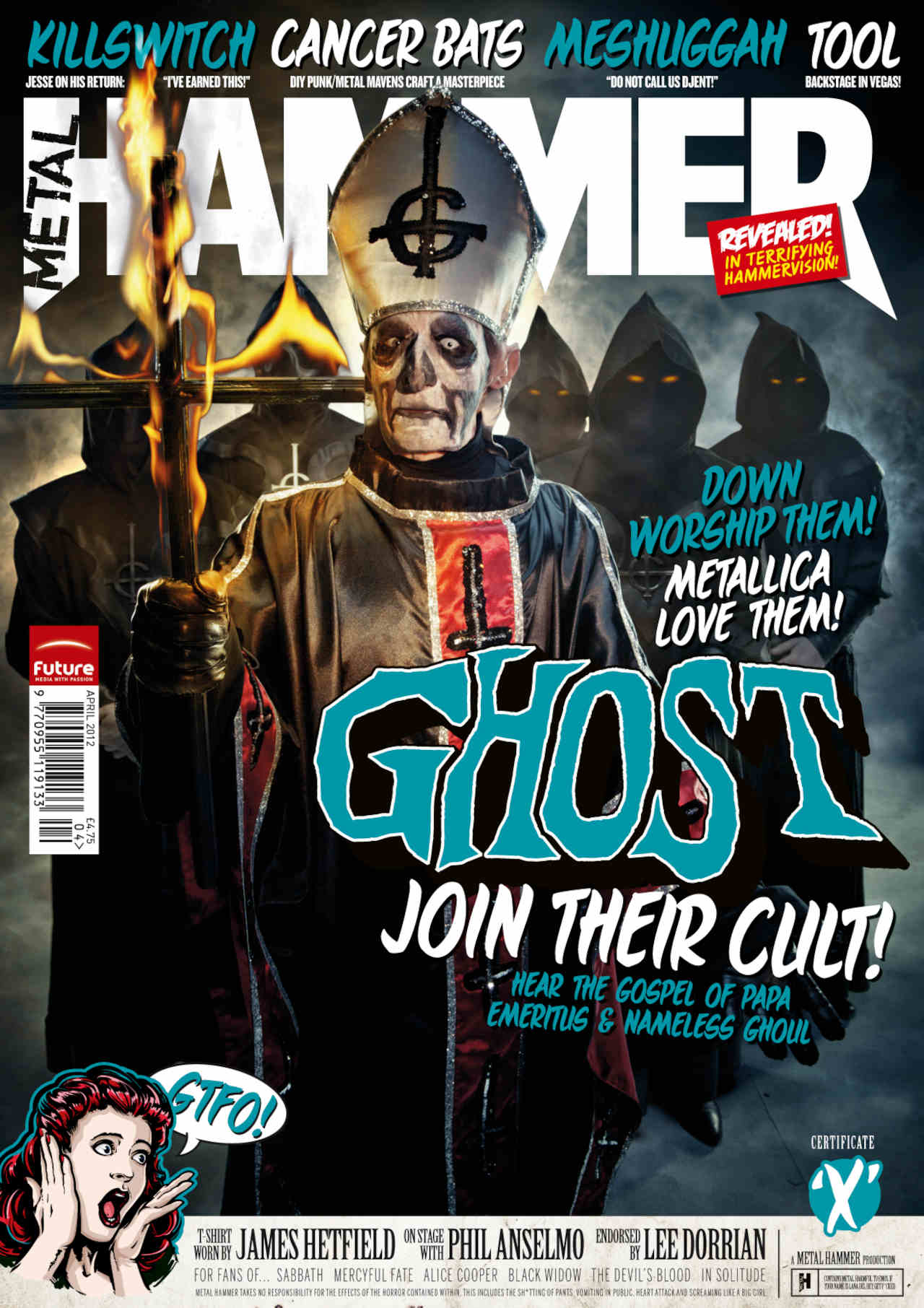
However, signing to the label meant having to find a new drummer, as Niklas Lundgren quit.
“He was scared by what the band had become,” considers Tomas. “To him it was all fine as long as the band remained no more than a hobby. But now it was something a lot more serious. So he left and sold his drum kit.”
The search for a replacement led to Tomas. “I was living in Örnsköldsvik, close to Umeå,” he continues. “I used to go there regularly to buy my drum heads from one particular music store. I got to know the guy who ran the drum department, and he also knew the Meshuggah guys. He told me they were looking for a new drummer, and he passed my number to them.”
With Tomas in place, the band recorded their debut album. Released in 1991, this was originally going to be called (All This Because Of) Greed, but at the last minute the title was changed to Contradictions Collapse.
“Well, we had this idea for the title and also the album cover design,” explains Tomas. “The line (All This Because Of) Greed is from the song Greed on that record. We explained our sleeve artwork idea to Nuclear Blast and they got someone to come up with a design. But when we saw what they’d done, all of us hated it. So the label then gave us a choice of three pieces of artwork that had already been done for other things, but never used. Now we liked the idea of the Statue Of Liberty set in what seemed to be the aftermath of a nuclear holocaust, but that didn’t fit in with the album title. That’s when we changed it.”
Musically, Contradictions Collapse was closely allied to the thrash movement, which had been a major source of inspiration for the four musicians as they grew up.
“We were all influenced by the Bay Area thrash scene, and also by NWOBHM,” agrees Tomas. “Bands like Anthrax, Metallica, Metal Church and even Holy Moses were our roots. You can hear all of this on that debut album. It was very primitive, I suppose, and a lot of the songs dated back a few years. Some were even written in 1987, and had first been recorded with Niklas. It is far removed from where we went musically, but as we developed so those influences began to become less important.”
The band, though, were about to go through yet another change, as Jens decided to concentrate on his vocals and gave up playing the guitar.
“Our music was beginning to become a little more complex,” reveals Tomas. “And it was difficult for Jens to play guitar and to sing live. He felt he had to make a choice, so decided to give up on the guitar completely and become our vocalist. This also suited Fredrik, because he had to do some of the live singing when Jens played guitar, and he hated doing it.”
The search for a new guitarist led to Mårten, who was cooling his heels at the time after Barophobia had split up.
“I was doing nothing musically at all,” he admits. “I’d even sold all of my equipment, except for one guitar. Inevitably, it was Tomas who suggested me to the rest of the Meshuggah guys. What convinced me to do it was that they not only wanted someone to play rhythm guitar, but also a person who could write. That suited me.”
The first recordings done by the new-look Meshuggah appeared as the EP None, released in 1994. For Mårten, this was a crucial opportunity to show what he could do.
“I was so lucky in that I was joining a band where I knew everyone, and also knew what they wanted to do musically,” he notes. “I was also encouraged to offer any ideas I had, and for None they actually chose to record some old songs I had never quite finished. This helped prove to them what I could do.”
“I think this was the moment when we really began to find our feet,” adds Tomas. “When you listen to None and compare it to Contradictions Collapse, you can see how much we were moving on. It was an important step for us.”
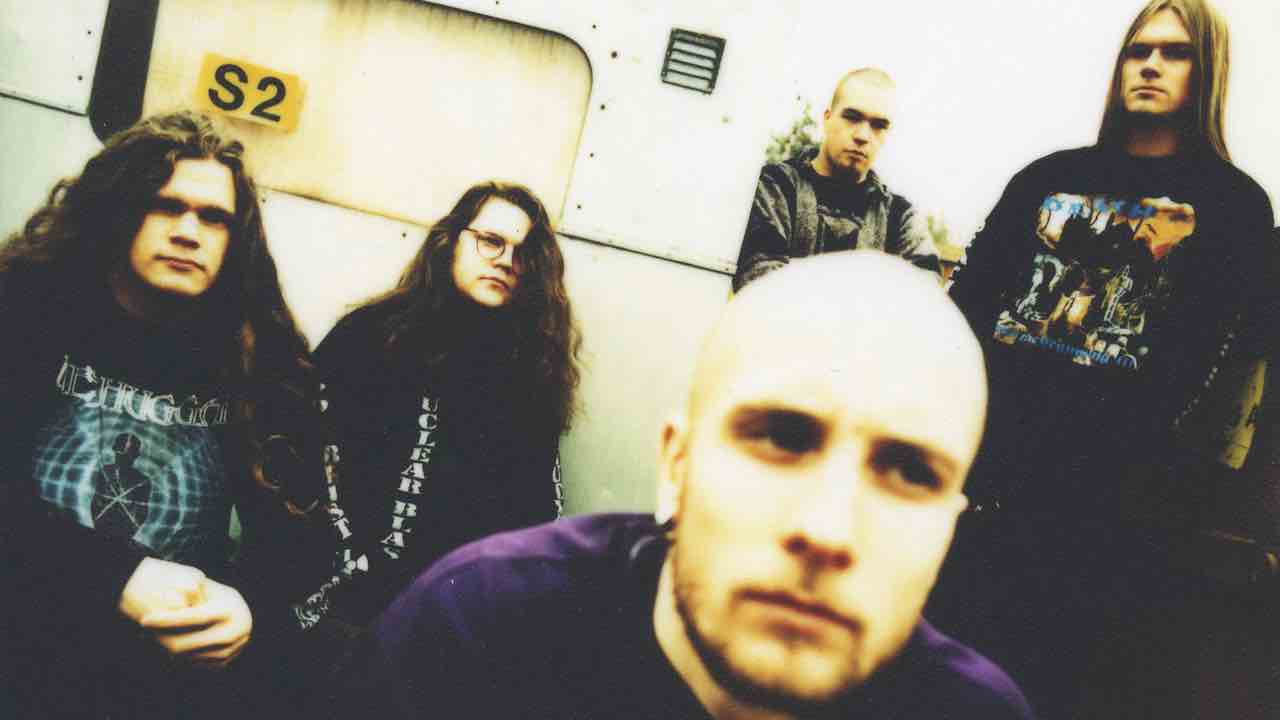
But bad luck struck Meshuggah just as they were getting into their stride. Both Fredrik and Tomas suffered injuries.
“Fredrik was a carpenter by trade and he accidentally severed the tip of the ring finger on his left hand at work,” shudders Mårten. “Thankfully, it was sewn back on, but it took him ages to be able to play the guitar again. In fact, at one stage we did wonder whether he would ever be able to play again. Yes, it was very close to finishing his career.
“At the same time, Tomas split a finger in an accident. Again, we all wondered whether he’d recover enough to pick up the sticks again. It was a bad time for us. I was living on Tomas’s couch, with no food and no money and just hoping the band would come through this. Everyone told me to stop dreaming and get a proper job. But I stuck it out, and after about six months we slowly got back into action.”
Once the injured pair were over their problems in 1995, Meshuggah released the Selfcage EP, which had been recorded in ’94 but had been held back until the band had momentum again. Then they recorded what was to be a vital album, namely Destroy Erase Improve.
“We worked on this with Daniel Bergstrand as producer,” says Tomas. “And it was an important time for us and him. In fact, working together helped to give us both a boost.”
Meshuggah then got another shot in the arm when they were invited by Machine Head to open for them on a European tour in 1995, just as the new album was released.
“They were really a happening metal band at the time,” reveals Mårten. “Their first album, Burn My Eyes, was out and there was such a buzz about them. So to get the chance to tour with them was a great thrill.”
But health problems again hit the Swedes hard, as bassist Peter Nordin was forced to leave the tour.
“He was sick every morning, and none of us knew what was wrong with him,” sighs Mårten. “In the end, there was no choice but to send him home. Adam Duce from Machine Head did offer to stand in for him, but we decided to do things ourselves. So Fredrik played bass and we adapted the set to feature only those songs that worked with one guitar.”
Peter eventually quit the band, being replaced by Gustaf Hielm, as the Swedes carried on touring.
The next significant move for Meshuggah was literally a move, as the musicians decided to relocate from Umeå to Stockholm.
“It was a really tough time for us,” admits Mårten. “But it made sense to move to Stockholm, because that was a major city for the music industry in Sweden. We wanted to have our own studio, do a lot more touring, and to live right in the heart of everything was crucial. But we arrived there with no jobs and no money, and really didn’t know what to do.
“We’d just done the True Human Design EP, which came out in 1997. That had one new song called Sane, and we’d done it because Nuclear Blast were keen to hear what we were doing musically. But we were in Stockholm feeling frustrated and aggressive about where we were in our lives and career, and you can hear all of that on the Chaosphere album, which came out at the end of 1998. It was the most chaotic record we’d ever done.”
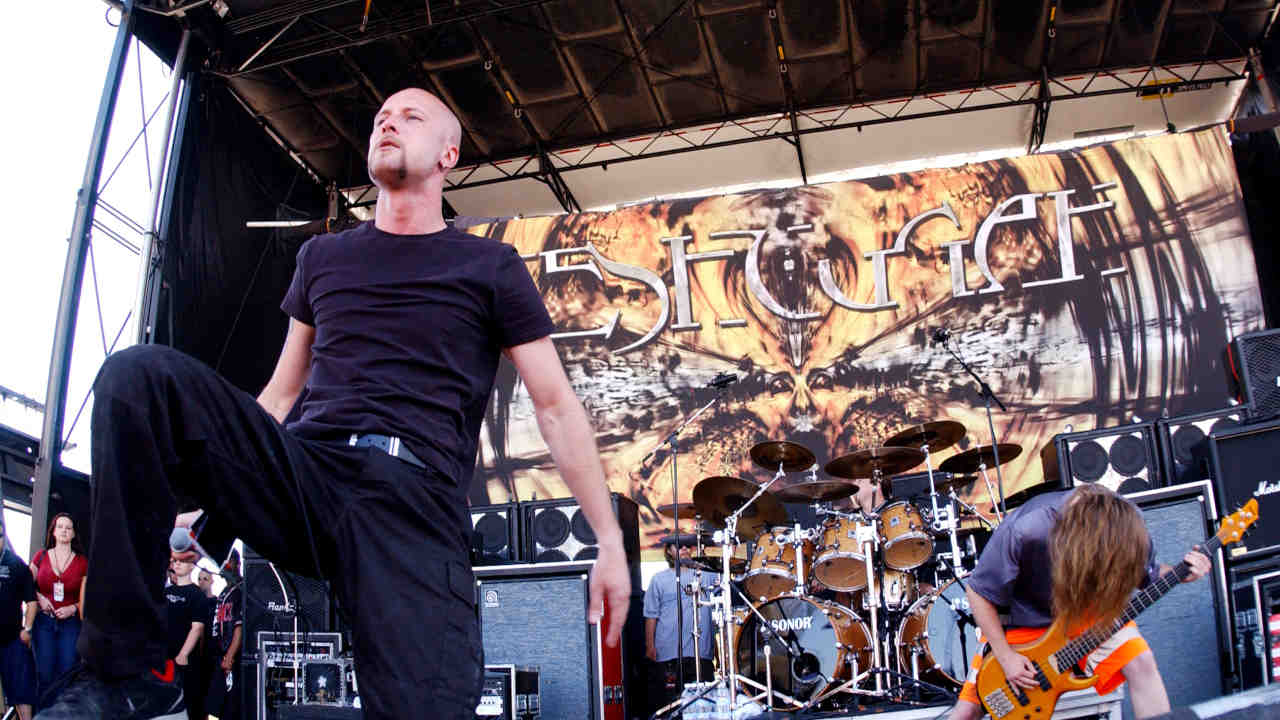
But while the band might have believed the world was passing over them, in reality their stock was on the rise and they were about to get a major breakthrough in America. Because in 2002, the next album, Nothing, became not only their first charting release in the States (making it to number 165), but it was the first time Nuclear Blast had ever had an album in the Top 200 over there.
“I put a lot of the success Nothing achieved down to the amount of touring we did in the States around that period,” says Tomas. “We had done two tours with Tool, another with Slayer and also been on the Ozzfest bill in ’02. That all helped to get our music across to a wider audience.”
“I think we did seven weeks with Slayer,” remembers Mårten, “and that was such a big deal for us. To be honest, we never expected to go down at all well. Most bands who open for Slayer suffer because the fans only want to see them. But for some reason they took to us. But we were still shocked to have Nothing do so well, and we were amazed that Nuclear Blast had never had anything so big in America before.”
Typically, the band decided their next project would be an EP featuring just one track, and that was 21 minutes long. This was the I EP, put out in 2004, by which time Dick Lövgren had taken over on bass.
“That was on the Fractured Transmitter label, which was started by Jason Popson, who’d been a member of Mushroomhead,” says Tomas, “We’d met him on the Ozzfest tour and gotten on really well. When he left the band he started up his own label and asked if we’d give him one track, anything we wanted. We asked Nuclear Blast if they were OK with the idea, and then came up with this very long, single song.”
And a similar concept was followed for the next album, Catch Thirtythree. Released in 2005, this is a continuous piece of music lasting for 47 minutes, albeit divided into 13 parts.
“Fredrik and I would go into the studio and mess around with ideas,” Tomas continues. “Every time we felt that we had something worked out all of us would record that section. It was a very flexible type of arrangement, and it gave us so much freedom to explore musical visions. We never intended it to be as long as it turned out. But we just kept going and going.
“I used a lot of programmed drums on it, because we never thought of ever having to play it live. This was to be just studio music, so I got to try out different approaches.”
Contrary to expectations, though, they did eventually play some of the album live, which caused Tomas a huge headache.
“We did a 30-minute segment from Catch Thirtythree onstage, and I had to spend ages going back and learning how to play the music. The whole thing had been so deliberately unstructured that it was a nightmare working out how to do it on a live kit.”
The band spent almost a year on the next album, obZen, both in terms of the writing and also the recording. But while this might seem to be a lengthy process, for Mårten it all made total sense.
“We’re very lucky in that Nuclear Blast never rush us. We have complete artistic freedom. In fact, that’s in our contract with them. It’s something we’ve always insisted on, and this is so much more important than money to us. So, when we get into the creation of any album or EP, we decide the timetable.”
“We’re not the sort of band who can write on the road. We have to be completely locked away in a different environment and then focus solely on that side of things,” adds Tomas. “We toured a lot with Catch Thirtythree, so had to start from scratch with obZen. It might appear that we took a very long time to do the album, but if you analyse the process, it wasn’t so time consuming. One of the things with us is that we never have any material left over from albums that we can subsequently use. What we record is used; there are no leftovers or outtakes.”
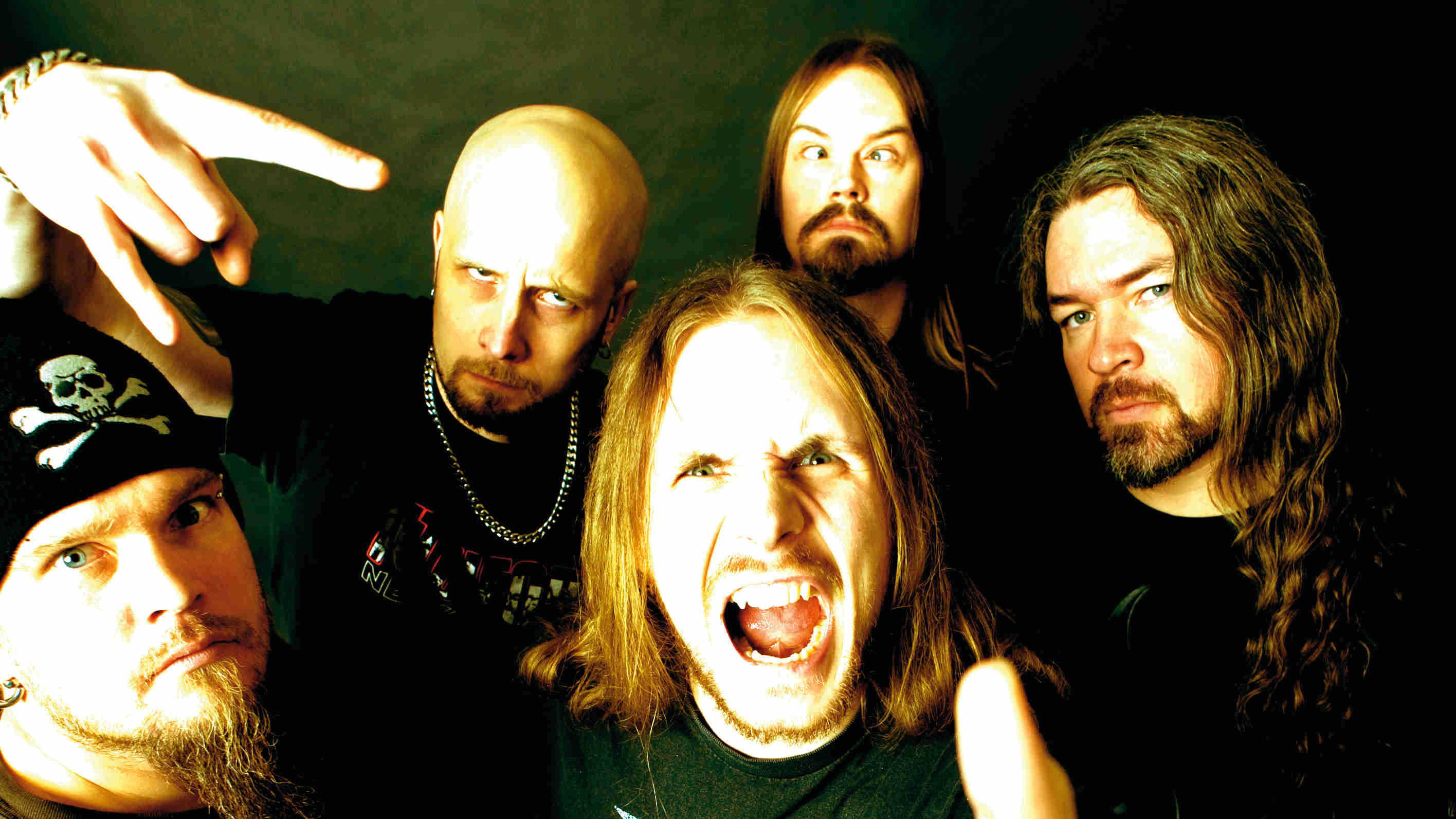
ObZen was to really catapult the band forward, reaching number 59 in the US charts and giving them more exposure than ever. But yet again health issues temporarily forced the band off the road. In April 2009, it was announced that Tomas was suffering from a herniated disc in his lower back.
“I had a back operation, and I lost control of my right foot. The control still hasn’t fully returned, and even when I could play again, for a while we had to cut anything from Chaosphere out of our live set, because I literally couldn’t play it. It’s been difficult. But I don’t think I’m unique among drummers. If you play as hard as I do then you are gonna put a lot of stress and strain on your body, and that leads to the type of injuries I’ve had. You just have to live with it.”
Thankfully, Tomas worked out his physically issues. The band’s 2012 album, Koloss, sees Meshuggah returning to a heavier approach.
“We do have our own style and sound now,” says Tomas. “You know a Meshuggah album when you hear it. But with each release, we try to move a little further sideways. Not forward, but sideways. We never want to repeat what we’ve done before.
“obZen was technically very complex and it was so difficult to do the songs live. It took us ages to learn how to do that. So this time, we’ve gone for music with a real groove and it’s also much heavier. As I’ve said, we are lucky enough to be able to do whatever we want.”
Meshuggah stand apart as one of the outstanding and individual metal bands of the 21st century. What they do is both visionary and inspirational, and they have inspired so many others to follow a similar path.
“To see that the djent genre has caught on is special to us,” admits Tomas. “To know that there are bands out there who cite us as a big influence makes it all worthwhile. Is there anything better? But we aren’t part of any movement. We like to think that we’re removed from all of that, and what we do is unique to us. Like any founding fathers of a musical style, that actual style doesn’t fully describe us.”
“It took us ages to realise that anyone was paying attention to what we did,” concludes Mårten. “At first we thought we were only doing things for ourselves… that nobody was paying attention. Then we found out that people were buying our albums, and listening to what we were doing. The strange thing is, this made us all the more determined to be true to ourselves. Selling huge numbers of records is not why were are here. Our music matters most of all to us. As long as we know we’ve done the right thing, we’re comfortable. If we inspire anything, let it be the pursuit of personal excellence. It’s not about being part of the pack.”
Originally published in Metal Hammer issue 229, March 2012
